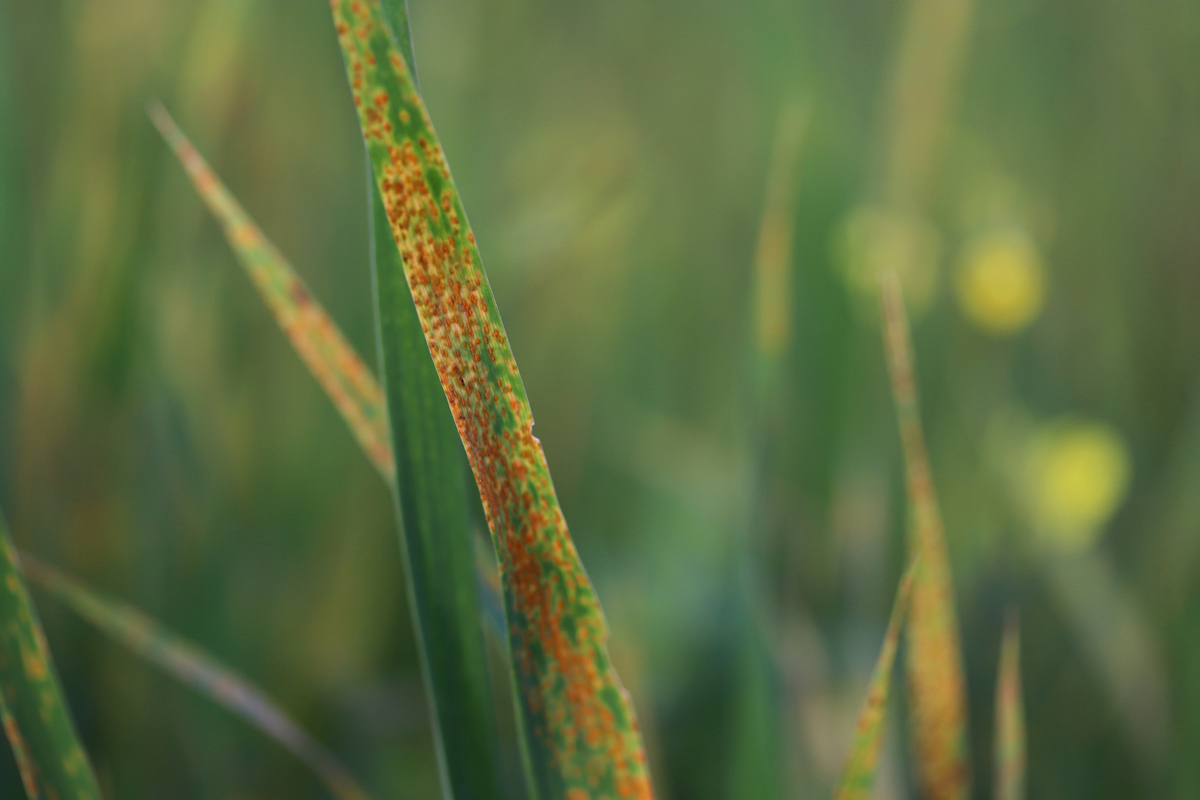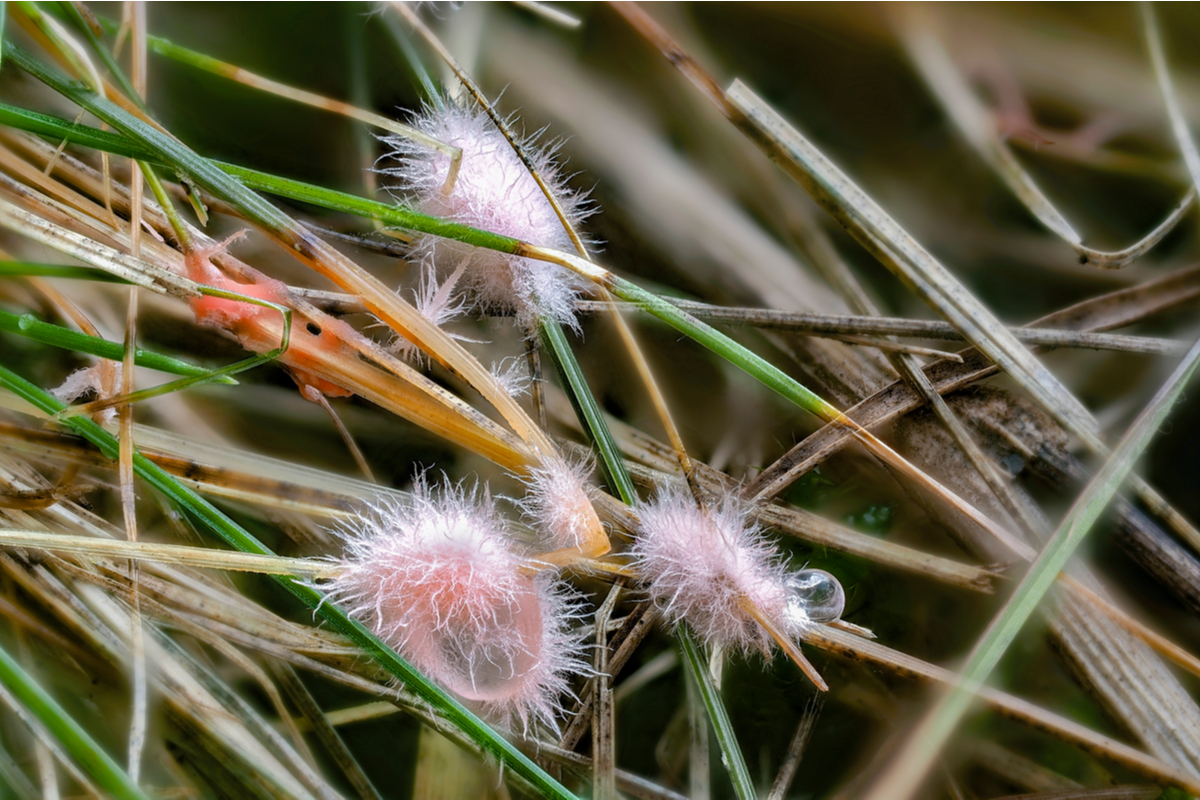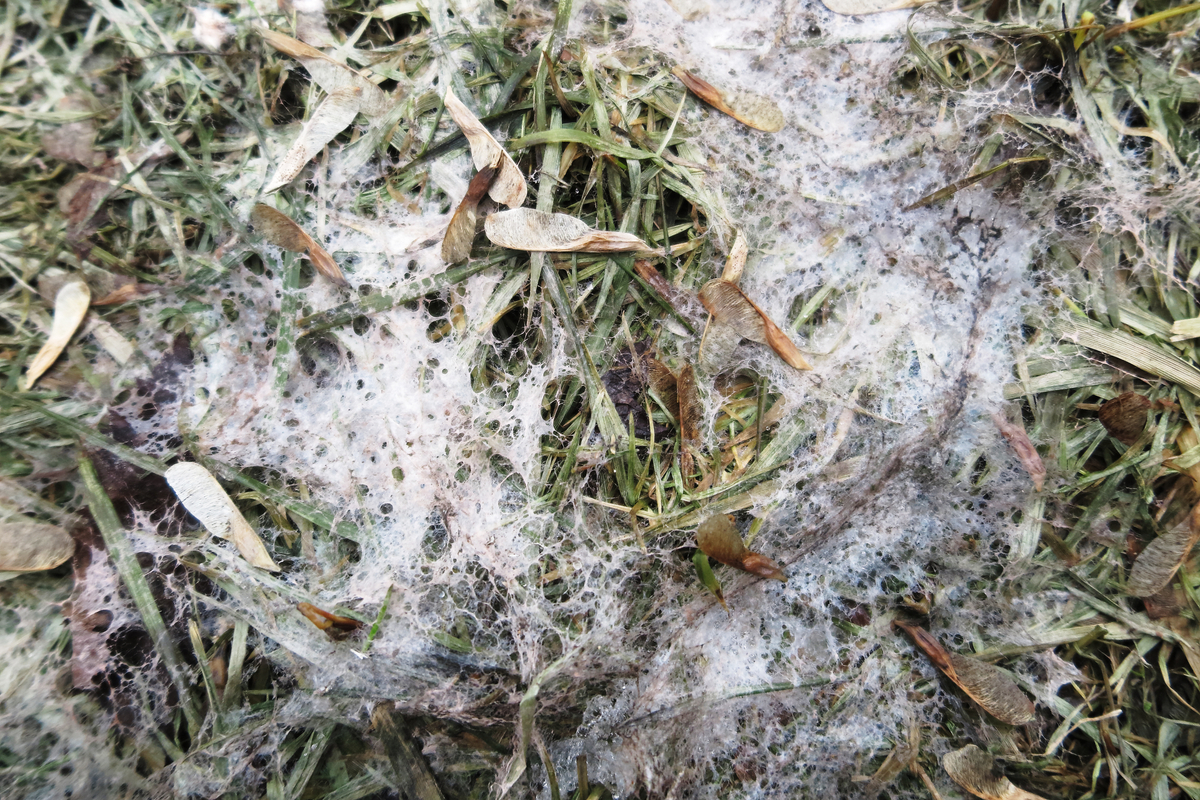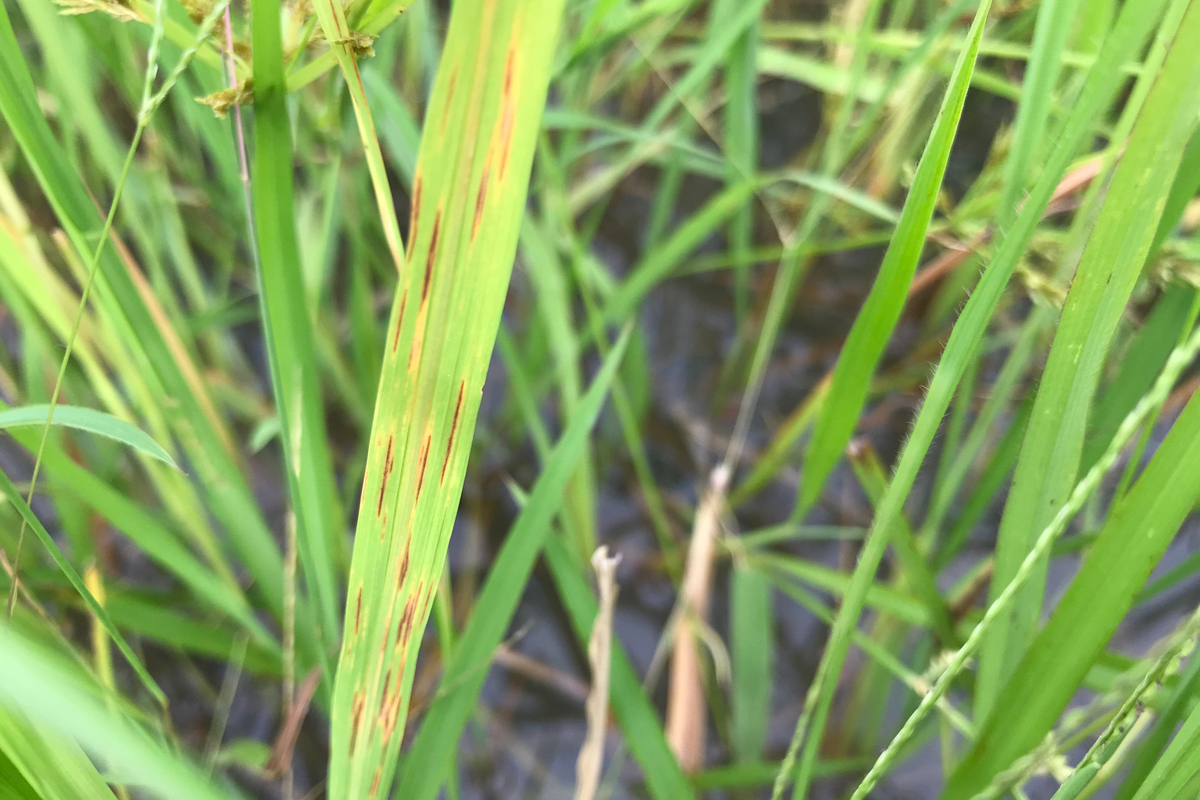We all want to achieve beautiful, lush green lawns. After all, the ideal grass is supposed to be a rich shade of green, with the exception of some specialty varieties. Sometimes, though, things go wrong, and your lawn fades or turns unnatural, unappealing colors. If your grass is starting to go brown out of season, or is turning a strange shade of pink, the problem may just be a fungal infection. Here are the four most common lawn fungi and how to get rid of them.
Lawn rust
Lawn rust is caused by the fungus puccina. It starts as orange dots on blades of grass, eventually spreading and darkening into a darker orangish-red color. In the latest stages of lawn rust infection, blades of grass look like they’ve been shredded or cut vertically.
The best way to treat lawn rust is to prevent it altogether. A well-kept, healthy lawn will be more resistant to diseases and fungus, so taking good care of your lawn can do wonders. However, once you have lawn rust there are a few options to consider.

If the infection is in the early stages, your lawn may be able to recover on its own. Make sure your lawn has plenty of water and fertilize it with high nitrogen fertilizer. Watering your lawn in the morning, so it has plenty of time to absorb into the soil before the sun burns it off, is also helpful.
Unfortunately, once lawn rust gets to later stages it isn’t likely to vanish on its own. You can apply a fungicide to control the infection, just be sure to read the instructions carefully to avoid harming the grass or yourself. You can also cut the grass in the infected areas to remove the fungus, disposing carefully of the lawn clippings and cleaning your equipment afterward to avoid reintroducing spores into your lawn.
Red thread
Red thread is an infection of Laetisaria fuciformis. The fungus forms thin, red, string-like bands across the tops of grass. It looks almost like someone has sprayed your yard with red silly string, but only in one area. If left alone, it’ll spread and, aside from looking unattractive, kill your grass.

You can prevent red thread by making sure your lawn has plenty of nitrogen and gets enough sun. Once you get red thread, you can, of course, use a fungicide to get rid of it, but there are other options, as well.
The best way to stop a red thread infection is to physically remove it. Cut your grass and use a catcher to prevent the clippings from returning to the lawn. Once you have the clippings, dispose of them in a trash can or burn them if you can do so safely. Don’t compost them, as that will just reintroduce the fungus. After all or most of the fungus is removed, fertilize your yard with a high nitrogen fertilizer.
Snow mold
There are two types of snow mold, gray and pink, and it’s important to know which one is affecting your lawn. They both become active when snow piles up over the dormant fungus, and they both appear in the form of circles or rings of gray or pink. Gray snow mold is caused by the fungus typhula, while pink snow mold comes from Microdochium nivalis.

To prevent snow mold of either type, try to stop snow from piling onto your lawn. This may mean shoveling your yard after snowfall or laying some kind of cover over your lawn when you’re expecting snow.
Knowing which type of snow mold you have is important because treatments differ. For pink snow mold, your best course of action is to apply a fungicide. However, with gray snow mold, fungicides aren’t usually recommended. For gray snow mold, physically remove the mold with a rake, shovel, or by cutting the grass.
Leaf spot
Leaf spot is caused by helminthosporium fungi and is especially common during warmer, wetter weather. From a distance, leaf spot often looks like patches of discolored grass similar to a lawn with uneven watering or sunlight. When seen up close, it appears that the blades of grass have cuts, holes, or spots that often look purple or brown.

When faced with leaf spot, the best course of action is to make sure your lawn is getting enough nitrogen and is properly aerated. This decreases stress on your lawn, allowing it to recover. It’s also important not to increase stress on your lawn. Make sure that when you mow your lawn, you aren’t cutting it too short.
There’s no reason that you shouldn’t have the lush, lovely lawn of your dreams! Now that you know what to be on guard against, and how to solve some of the most common fungal problems, you’ll be prepared no matter what color your lawn starts turning.
Editors' Recommendations
- What you need to know about deadheading in your garden
- 5 essential spring lawn care tips you need to know
- How to prune lilacs for healthy growth and beautiful blooms
- Make sure your hydrangeas have the best blooms by pruning them properly
- What is diatomaceous earth – and why does your garden need it?




